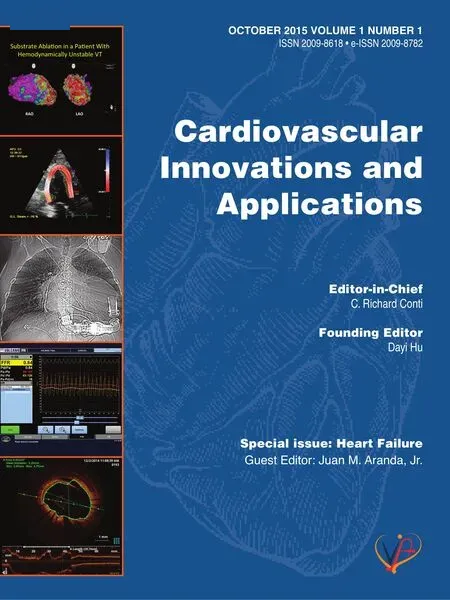Editorial by the Founding Editor
When China opened its doors to the world 26 years ago, there were very few cardiology meetings organized in China with an international outlook. Shortly thereafter, in 1990, the Great Wall International Congress of Cardiology (GW-ICC) held its inaugural meeting. In its first few years, the main focus of the GW-ICC was promoting research and education within the Chinese cardiology community, and on promulgating techniques such as catheter ablation of tachyarrhythmias and balloon angioplasty. Even from this early stage, the GW-ICC became a great social and scientif i c success. The reason for this success was that the GW-ICC offered opportunities for Chinese cardiologists to make direct contact with their US and European colleagues who in turn loved to come to China and learn about the issues facing cardiologists here.
Since that time, the GW-ICC has been at the forefront of the growth in Chinese cardiology research,ref l ecting China’s growing importance in world research rankings. For example, in 2014, the ISI database shows China to be the third largest source of cardiology-related papers, surpassed only by the United States in first place and the United Kingdom in second place. In the year 2015 up through July, China has moved to second place ahead of the United Kingdom. This trend will certainly continue.
It is evident that China now needs its own English-language, multi-national journal where top-rated articles from around the world can be published.Cardiovascular Innovations and Applications (CVIA), the new, off i cial journal of the GW-ICC will fi ll this void. Unique to this journal will be the continuation of a scientif i c exchange of ideas between leading Chinese clinicians/researchers and clinicians/researchers around the globe.
CVIAwill initially publish focused articles of original clinical research that explore current and novel developments in cardiovascular disease, as well as its prevention and rehabilitation. In keeping up with its title,CVIAwill promote innovations and applications for the global betterment of cardiovascular public health.AsCVIAdevelops and matures,it is aimed to become a respected and trusted reference for the cardiology academic community around the world.
As the off i cial journal of the GW-ICC,CVIAis also being established to further the special missions of the GW-ICC:
· To assist Chinese cardiologists in the advancements of cardiovascular learning and disease management.
· To accelerate the development of cardiology in China, while advocating cardiovascular public health education and cost effective use of stateof-the-art cardiovascular technology.
· To serve as a bridge between China and the international cardiology academic community.CVIAwill publish the best abstracts, articles and proceedings generated by the GW-ICC, as well as its programs.
As part of its mandate to help bring interesting work and knowledge from around the world to a wider audience,CVIAwill actively support authors through open access publishing and through waiving author fees for the first two years. Also, publication support for authors whose first language is not English will be offered in areas such as manuscript development, English language editing and artwork assistance.
CVIAwill be about quality, excellence and innovations in cardiac care and relevant applications. Journal articles will prepare cardiologist readers to be at the forefront of the medical community and proactively ready for any changes in cardiology practice in the next decade, since the speed of change from 2015 to 2025 may be 10 times faster and more extensive than the changes that have occurred from 1990 to 2015.CVIAwill provide the means of sustaining the growth of China-based cardiovascular research into the long-term future.
I hope you will join me, Editor-in-Chief C. Richard Conti, and my eminent colleagues onCVIA’s international Editorial Board in contributing to this strategic initiative to create a world-class cardio logy journal geared to promoting the important exchange of innovations and applications, as its name signif i es.
 Cardiovascular Innovations and Applications2015年4期
Cardiovascular Innovations and Applications2015年4期
- Cardiovascular Innovations and Applications的其它文章
- Mechanical Circulatory Support for the Failing Heart: Which Device to Choose
- Continuous Flow Left Ventricular Assist Device Therapy: A Focused Review on Optimal Patient Selection and Long-Term Follow-up Using Echocardiography
- Cardiac Resynchronization Therapy in 2015:Lessons Learned
- Pulmonary Arterial Hypertension and the Failing Ventricle: Getting It Right
- The Evaluation of the Heart Failure Patient by Echocardiography: Time to go beyond the Ejection Fraction
- Noninvasive Hemodynamic Monitoring for Heart Failure: A New Era of Heart Failure Management
